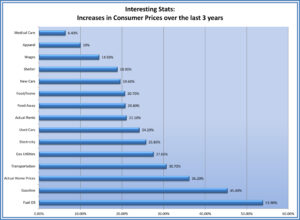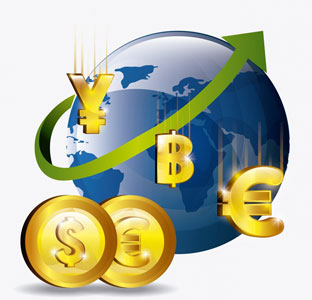The Carry Trade: Why is it on our radar?
Carry Trade Defined.
The carry trade is a trading strategy that involves borrowing at a low interest rate and investing in an asset that provides a higher rate of return. Typically, a carry trade is based on borrowing in a low-interest rate currency and converting that borrowed amount into another higher yielding currency. The proceeds from the exchange are then used to invest in assets such as stocks, bonds, commodities, or real estate.
Examples of Carry Trades.
In its simplest form think of borrowing from a credit card. Credit card issuers tempt consumers with 0% interest rates for short-term periods (usually 6 months to one year). Many times a flat, upfront fee of 1% is charged. Assume a 1% cost of funds for a $10,000 cash advance. Then this money is invested in a one-year treasury bill yielding let’s say 5%, this would translate into a $400 ($10,000x (5%-1%) or 4% profit.
Another example using the above numbers – investing the $10,000 in the stock market. The objective then may be a return of 10%, or a net return of 9% if all goes as hoped in the stock market. But if there is a 20% correction and the investor’s portfolio is down at the end of the year when the credit card balance is due, the carry trade has not worked out as planned. The investor now has a deficit of $2,000 instead of a 9% gain.
So, the above two examples are U.S. denominated carry trades. The investing on both sides of the transaction, borrowing and investing, are in U.S. dollars. Now let’s look at an example involving much greater risk. Instead of the stock market, an investor converted the borrowed amount of $10,000 into another currency (AC) deposit offering an interest rate of 6%. At year-end, if the exchange rate between the dollar and the AC is the same, the return on this carry trade is 5% (6%-1%). If the AC has appreciated by 10%, the return would be 15% (5%+10%). But, if the AC depreciates by 10%, the return would be (-5%) (5%-10%).
A carry trade that has caught our attention, is the trade involving the Japanese Yen. Foreign exchange investors have been doing very well due to the huge gap between Japanese interest rates and U.S. interest rates. Predictable monetary policies have made it easy to borrow yen and invest it in U.S. dollar assets – especially our treasury securities. Japan has kept their interest rates near zero for years, employing a policy of “yield curve control”. The Japanese Government/Bank of Japan has kept interest rates on their government bonds in a narrow range from about -0.01% to just under 1%. Inflation has started to become a problem in their economy, so the government is making noises about expanding the range of interest rates.
Unwinding of the Yen Carry Trade.
Japan is the biggest non-U.S. holder of U.S. government debt (treasuries). The Japanese people have very high levels of savings – a pool of about $15,000 billion. This pool is worth more than the total Gross Domestic Product (GDP) of the U.S economy – compare Japan’s excessive savings with U.S. excessive borrowing and spending (which has led to inflation). Because Japan’s interest rates have been so low, Japanese investors have been investing overseas. If the Bank of Japan starts increasing their interest rate band and other countries start lowering their interest rates, the probability that Mr. and Mrs. Watanabe start repatriating their money back to Japan is high. This could mean a big buyer of our treasury securities will buy less, and in order to entice other buyers to pick up the slack, our interest rates may have to rise.
Market Commentary.
2023 was a year of volatility and speculation. The stock indexes were up due to the “magnificent 7” (Alphabet, Apple, Amazon, Meta, Microsoft, Tesla, Nvidia)– the stocks that got hit hard in 2022. So, for investors in these stocks, they are back to about even over the last two years. Approximately 62% of the performance of the S&P in 2023 was due to these 7 stocks. The other 493 stocks in the index were just above flat. Money market rates continued to climb in 2023. The long-term stock market average has been about 8-9%. With government money market mutual funds paying over 5%, investors can get more than half the long-term average performance with no risk. There is much uncertainty and risk here and around the world. Having some cash reserves now affords us to earn a decent rate of return while waiting for better market conditions to put more money to work. Having reserves provides opportunity. Opportunity to invest when we have a clearer picture of the future and good value presents itself. We are ever optimistic that these opportunities will do just that.

We appreciate and thank you for the trust and confidence you have placed in Occam Capital® Management, LLC.

